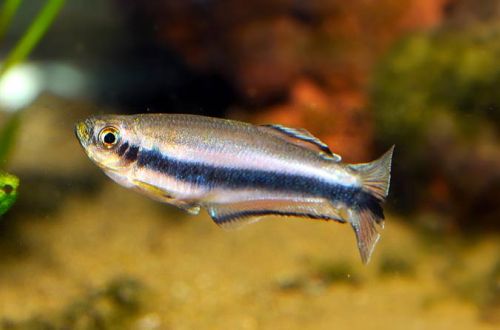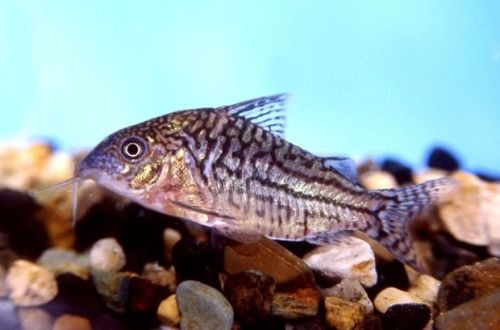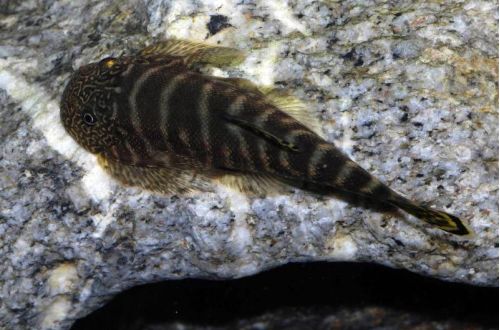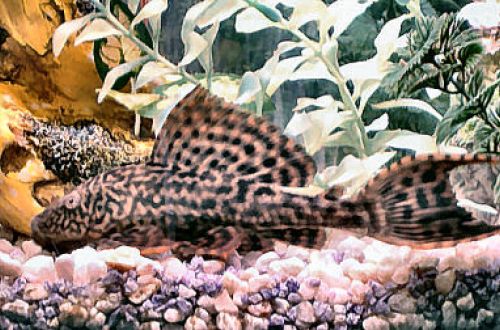
Mimagoniatus Barbera
Mimagoniatus Barbera, scientific name Mimagoniates barberi, belongs to the Characidae family. Active mobile fish with beautiful blue hues in their color. Makes a good addition to a community of other freshwater fish. Like other tetras, it is easy to keep and can be bred.

Contents
Habitat
The fish is native to South America. It is found in the Parana River basin in the southern states of Brazil, Paraguay and the northern regions of Argentina. Inhabits small streams and rivers, prefers shallow regions with dense aquatic vegetation. The silted bottom is covered with numerous snags, a layer of fallen leaves and other plant remains. A large amount of organics leads to the saturation of water with tannins, coloring it in a rich brown light. In some places, the water may acquire a dark coffee tint.
Brief information:
- The volume of the aquarium – from 100 liters.
- Temperature – 20-24°C
- Value pH — 5.0–6.5
- Water hardness – soft (2-8 dGH)
- Substrate type – any dark
- Lighting – subdued
- Brackish water – no
- Water movement is weak
- The size of the fish is 4–5 cm.
- Feeding – any food of suitable size
- Temperament – peaceful
- Keeping in a flock of at least 8-10 individuals
Description
Adults reach a length of 4–5 cm. Males look somewhat larger, females are more slender. Otherwise, sexual dimorphism is weakly expressed. Outwardly similar to another closely related species – the Blue Tetra. In the color of the body and fins there are blue shades, which appear against the background of a gray-silver color. A characteristic feature is a dark stripe stretching from head to tail.
Food
An omnivorous species, it will accept most popular, appropriately sized foods used in the aquarium hobby. The daily diet can include both dry, frozen and live food, as well as their combinations.
Maintenance and care, arrangement of the aquarium
The optimal size of an aquarium for a flock of 8-10 fish starts from 100 liters. They are highly mobile, so the larger the tank, the better. The design should provide for a large amount of aquatic vegetation (live or artificial) and various shelters. Driftwood will look most harmonious in this role.
Mimagoniatus Barbera is an excellent jumper, in nature they are thus saved from predators and in the event of any other danger. To minimize the chance of jumping out, the aquarium should be equipped with a lid, and thickets of floating plants can be placed on the surface of the water. The latter also serve as an excellent means of shading, which will come in handy, since in the natural environment the level of illumination is quite low due to the dark water.
Recreation of conditions similar to natural is achieved by using the leaves of some trees (oak, alder, Indian almond, etc.). During the decomposition process, tannins and other tannins are released, giving the water its characteristic brown color, as well as lowering the pH value along the way.
With long-term maintenance, it is important to maintain the values of hydrochemical parameters in an acceptable range, to prevent the increase in the concentration of nitrogen cycle products to a dangerous level, to provide warm and clean water. To this end, they install the necessary equipment, in particular a filtration system, and carry out regular maintenance of the aquarium.
Behavior and Compatibility
Mimagoniatus Barber’s tetras are highly mobile. Males tend to chase females and in a small aquarium, where they have nowhere to hide, troubles are possible in the form of exhaustion and even death. It is advisable to purchase a flock of 10 individuals so that the attention of males is dispersed on several “targets”. If possible, there should be fewer males. Peacefully tuned in relation to other species.
Breeding / breeding
Under favorable conditions (balanced nutrition, suitable water composition), spawning is not uncommon. The female spawns in thickets of plants, and the male fertilizes the eggs. Parental instincts are not developed, the fish do not care about the laying and the fry that have appeared, and on occasion they can eat them. To preserve future offspring, eggs should be placed in a separate tank filled with water from the main aquarium and equipped with a simple filtration system, such as an airlift filter. The incubation period lasts several days. At first, fry are fed with specialized products in the form of a suspension, powder, then Artemia nauplii or similar feeds can become the basis of the diet.
Fish diseases
A balanced aquarium biosystem with suitable conditions is the best guarantee against the occurrence of any disease. If the fish’s behavior, color has changed, non-characteristic spots and other symptoms have appeared, the first thing to do is to check the water parameters, and only then proceed to treatment. Read more about symptoms and treatments in the Aquarium Fish Diseases section.





